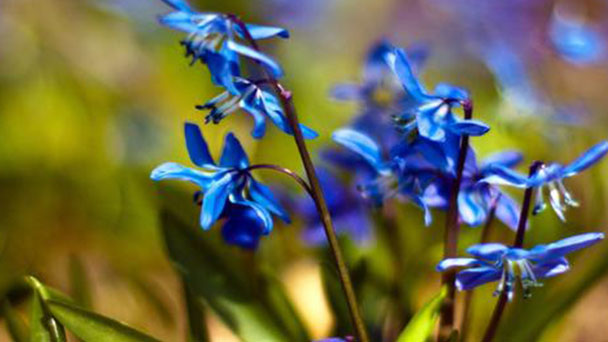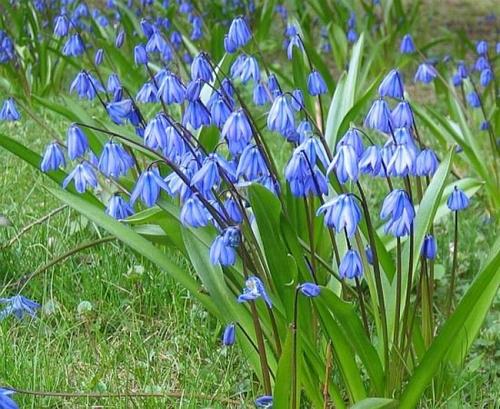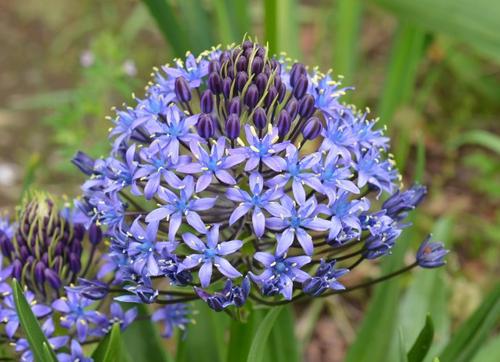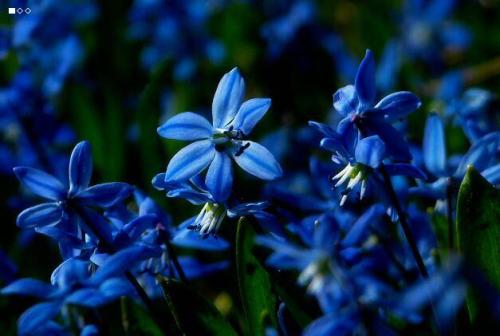Siberian squill (Scilla siberica) profile
Written by Maggie
Mar 08 2021

Siberian squill(Scilla siberica) belongs to the family and genus of Liliaceae, genus Jujube.
Siberian squill picture

Morphological characteristics of the Siberian squill
Siberian squill is a perennial herb. Bulbs are large, crusted, subglobose, white. Plant height is 10cm ~ 20cm, plant width is 5cm. Leaves are basal, linear, 10 to 15cm long, prostrate in a rosette, gradually erect after flowering. Racemes, usually 3, pendulous, dark blue, 1.5cm in diameter, spring.
Ecological habits of the Siberian Squill
The Siberian Squill prefers cool, moist, and semi-cloudy conditions. It has strong cold resistance and can withstand the low temperature of -20℃ in winter. The suitable temperature for growth is 15℃ ~ 16℃.PH 6.5 ~ 7.0. In summer the aboveground leaves wither and enter a dormant period when they should be kept dry. For open cultivation, a fertile, loose and well-drained sandy loam is required. For potting, a mixture of 2 parts fertile garden soil, 1 part leaf rot soil and 1 part sand is required.
How to grow and care for Siberian Squill
Planting Siberian Squill requires loose soil, sufficient fertilizer, potting soil to use fertile garden soil or leaf rot soil. Outdoor bulbs planted depth to 4.5 cm, with 2 ~ 3 centimeters advisable, plants bulb weeks diameter in 6 ~ 8 cm オ can blossom.10 cm pot - 3 to 4 bulbs as usual. After planting, the temperature should be controlled at 15~17 degrees Celsius, and early watering should not be too much. With the growth of Siberian squill root system, the amount of watering should be increased gradually. In winter, it could be covered with decaying cake fertilizer or organic fertilizer, which was beneficial to the next spring flowering. Stop watering after April flowering to promote bulb maturation into a dormant period. Bulbs for facilitating cultivation should be stored at 10~12 ℃ for 12~15 weeks and then at about 16 ℃ to break dormancy. Rhizome rot and rust are easy to occur.
The propagation of the Siberian Squill
Propagation: Commonly dividing and sowing to propagate. In summer, the aboveground part of the plant Withers and is dug up and stored at 19℃ after drying. siberian squill is planted in autumn from September to October according to the size of the bulb. It can also be used to propagate the bulb by bulb division method. Generally every 2~3 years a plant. Sowing reproduction, autumn sowing in the cold bed, the next year 1~2 months germination seedlings, or seed sand after spring sowing, generally sowing 30~33 days germination, sowing seedlings in the summer of the formation of small bulbs, 2~3 years after cultivation to become the kind of flowering bulbs.

Disease control of the Siberian Squill
Siberian Squill is predisposed to rooting neck rot and rust. Root neck rot disease can be used Bordeaux spray prevention and control, rust disease can be used 50% wilting rustling wettable powder 2000 times liquid spray prevention and control. Insect pests have aphids damage, with 40% oxidized dithoate oil 1500 times liquid, or 2.5% of the essence of the TL oil 1000 times liquid spray kill.
The distribution of the Siberian Squill
The Siberian Squill is native to Ukraine, Azerbaijan, Russia, Georgia and northern Iran. Asia Minor, Mediterranean region.
Siberian Squill varieties
Scilla siberica: When unspecified, these are the standard type, featuring the familiar blue, star-shaped flowers.
Scilla siberica 'spring beauty': This is one of the larger scilla varieties, with bell-shaped blue and up to five flower stalks per plant.
Scilla siberica alba: This variety is rarer, with clear white flowers.
The garden use of the Siberian Squill
The Siberian squill is adaptable and blooms early in the spring. The flowers are dense, the color is simple but elegant, the plant shape is low. Siberian Squill is used to decorate flower beds, flower borders, open forests or rock gardens, fresh and lively, quiet and simple but elegant, showing a strong spring atmosphere. Potted plants are also very suitable for indoor environment layout.

Latest Updated
- Benefits of Bugleweed - 7 Science-backed Health Benefits
- Bugleweed Dangers & Side Effects - Is It Poisonous?
- How to Plant Evergreen Trees - What You Should Know
- When to Plant Evergreens - Grow Guide for Evergreen Trees
- 12 Wonderful Evergreen Shrubs for Your Garden
- 12 Popular Evergreen Plants with Pictures for Beginners
- When And How To Prune A Lilac Bush Like a Pro
- How to Grow & Care for Lilac Vine (Hardenbergia Violacea)
- Japanese Lilac Tree (Syringa Reticulata) Care & Propagation Guide
- Shumard Oak Pros and Cons - What to Know
Popular Articles
- Winter maintenance of Antirrhinum Majus
- How to Grow Terminalia Mantaly Tree
- How to Grow and Care for Crossostephium Chinense
- How to grow Antirrhinum Majus in spring
- Peristeria Elata (Dove Orchid) Profile: Info & Care Guide
- Underwatered Snake Plant (Sansevieria Trifasciata) - Signs And How To Fix
- How to Care for Brazilian Jasmine Plant (Mandevilla Sanderi)
- How to Grow & Care for Graptopetalum Purple Delight in Summer
- Rosa Chinensis (China Rose): Plant Growing & Care Tips
- How to Care for Baby Sun Rose (Aptenia Cordifolia)